Apple Announces iPhone 6 and iPhone 6 Plus; Available September 19th
by Joshua Ho on September 9, 2014 1:30 PM EST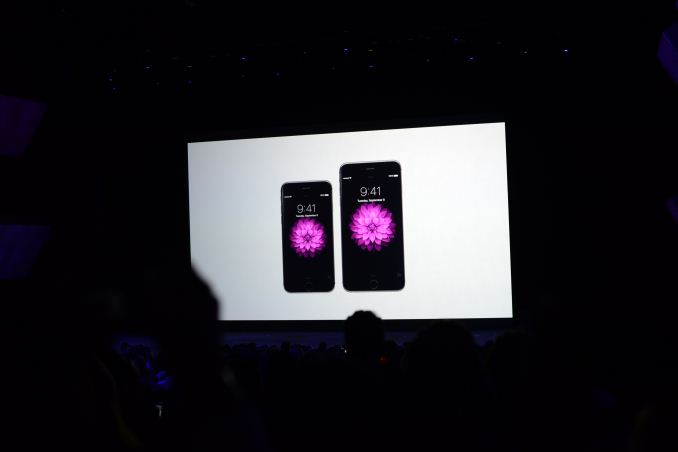
Today, Apple is launching the new iPhone 6 and iPhone 6 Plus. One of first changes is that the new iPhone 6 has a 4.7" 1334x750 display, and the iPhone 6 Plus has a 5.5" 1920x1080 (1080p) display. The thickness of of the 4.7" model is 6.6mm and the 5.5" model is 7.1mm.
The displays will have higher contrast, better peak brightness, and better viewing angles according to Apple. This suggests that the iPhone display has a chevron shape to its subpixels to improve viewing angles. The glass also has a 2.5D curve similar to the HTC One X and Samsung Galaxy S3 for a smooth feel when swiping off the edge of the phone.
iOS is also adapted to the new larger iPhone 6 Plus' display by adding landscape views for many native applications that are two pane. In addition, in order to work with the differing resolutions Apple has added a "desktop-class scaler" to avoid incompability issues with applications that aren't aware of the new displays. This in turn implies that Apple is not doing integer scaling/doubling in all cases, and that we'll see fractional scaling used. These displays are known as Retina HD. There's also a one-hand mode for the iPhone 6 Plus in order to deal with the larger display size.
The new A8 powers both of these iPhones, and has 2B transistors compared to 1B the A7. It's also built on 20nm but it's unclear whether this is TSMC, Samsung, or both.
Apple also claims 25% higher CPU performance on the A8 and is also emphasizing that this new SoC can do better sustained performance over time compared against other smartphones. The GPU is supposed to be a GX6650.
Image Courtesy Engadget
Apple is also emphasizing that battery life on the iPhone 6 and how it compares to the iPhone 5s. WiFi browsing battery life is slightly increased over the 5s while LTE browsing battery life is unchanged, meanwhile the iPhone 6 Plus improves to 12 hours for both WiFi and LTE.
There's also a new M8 coprocessor which makes use of a new barometer sensor to measure relative air pressure and compute distance and elevation for better fitness tracking, which is used for the health application in iOS 8.
Apple is also finally introducing MDM9x25 with carrier aggregation and VoLTE. This means that there's a dual transceiver solution in the iPhone 6 devices. On the same line, Apple is finally adding 802.11ac to its smartphones and has worked on enabling seamless WiFi calling that goes from WiFi to cellular networks.
On the camera side, we see a new 8MP sensor which adds phase detection auto focus for faster autofocus, which is touted to be able to focus at up to 2x speed. There's also better local tone map and better noise reduction in addition to the PDAF system that was first seen in the Samsung Galaxy S5. Panoramas can now be up to 43MP in total resolution and a better gyroscope reduces stitching errors.
There's a brand new ISP in the A8 SoC as well, which is likely to be named the H7 ISP if we follow from the A7. Furthermore there's one feature that the iPhone 6 Plus does have that the iPhone 6 doesn't have for the camera, which is optical image stabilization (OIS) to reduce shaking. It appears that the entire module is floating instead of just a VCM-based lens stabilization system. There's also a timelapse feature. The PDAF also helps with continuous AF in video that avoids all of the breathing effects that come with conventional contrast-based focus.
The front facing camera also has a better sensor, f/2.2 aperture, single photo HDR, HDR video, and burst shot on the front facing camera.
Both will launch with iOS 8, which has QuickType that we've talked about at the WWDC keynote in addition to Extensibility which allows for TouchID auth in third party apps.
Also new to the iPhone 6 family is Near Field Communication (NFC) hardware, which is being used to power Apple's new payment system, Apple Pay. The iPhone 6 family utilizes an encrypted secure element (likely on the NFC chip itself) and credit cards are added through Passbook and validation for a purchase can be done using TouchID.
Apple has reassured security concerns by saying that Apple cannot know what is purchased and the cashier cannot see the credit card number or any information to ensure security. Online payment is also handled by Apple Pay which is a one-touch solution using TouchID and one time number from the secure element. Groupon, Uber, Target, Panera, MLB, and Apple store applications are all already supporting this system. Another example cited was OpenTable which allows for one to pay for a dinner check through an app. The system launches in the US in October as an update and will have an API open to all developers to implement in their applications.
| Apple iPhone 5s | Apple iPhone 6 | Apple iPhone 6 Plus | |
| SoC | Apple A7 | Apple A8 | Apple A8 |
| Display | 4-inch 1136 x 640 LCD | 4.7-inch 1334 x 750 LCD | 5.5-inch 1920 x 1080 LCD |
| WiFi | 2.4/5GHz 802.11a/b/g/n, BT 4.0 | 2.4/5GHz 802.11a/b/g/n/ac, single stream, BT 4.0, NFC | |
| Storage | 16GB/32GB/64GB | 16GB/64GB/128GB | 16GB/64GB/128GB |
| I/O | Lightning connector, 3.5mm headphone | ||
| Size / Mass | 123.8 x 58.6 x 7.6 mm, 112 grams | 138.1 x 67 x 6.9 mm, 129 grams | 158.1 x 77.8 x 7.1 mm, 172 grams |
| Camera |
8MP iSight with 1.5µm pixels Rear Facing + True Tone Flash 1.2MP f/2.4 Front Facing |
8MP iSight with 1.5µm pixels Rear Facing + True Tone Flash 1.2MP f/2.2 Front Facing |
8MP iSight with 1.5µm pixels Rear Facing + True Tone Flash + OIS 1.2MP f/2.2 Front Facing |
| Price | $99 (16GB), $149 (32GB) on 2 year contract | $199 (16GB), $299 (64GB), $399 (128GB) on 2 year contract | $299 (16GB), $399 (64GB), $499 (128GB) on 2 year contract |
There are new silicone and leather cases with gold, silver, and space gray. The iPhone 6 starts at the usual $199 for 16GB, $299 for 64GB and $399 for 128GB. The iPhone 6 Plus comes in the same colors at $299 for 16GB, $399 for 64GB and $499 for 128GB. The iPhone 5s is now $99 on 2 year contrast, and the iPhone 5c is free. The new phone will ship on September 19th and preorders begin on September 12th.


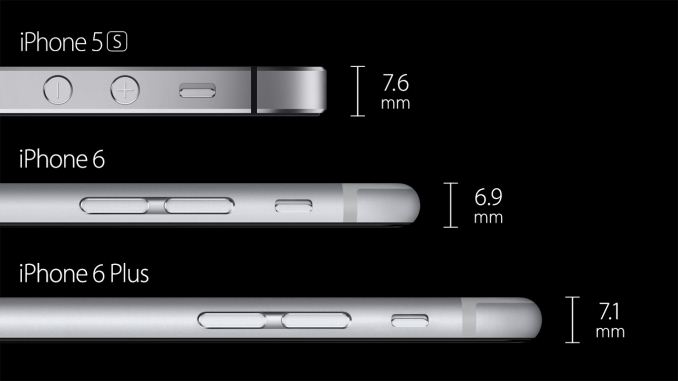
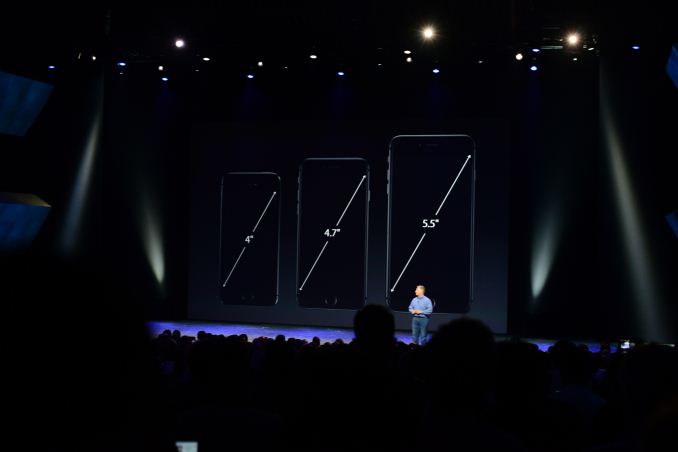
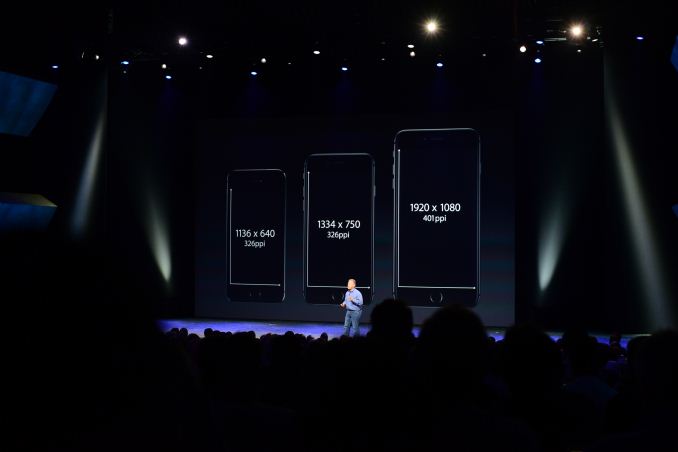
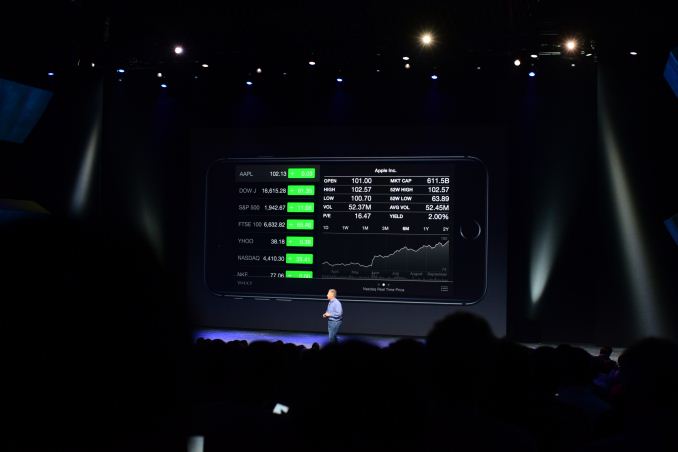
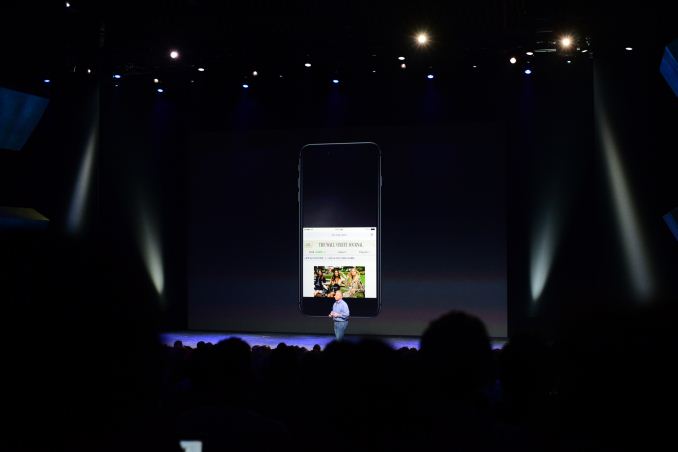
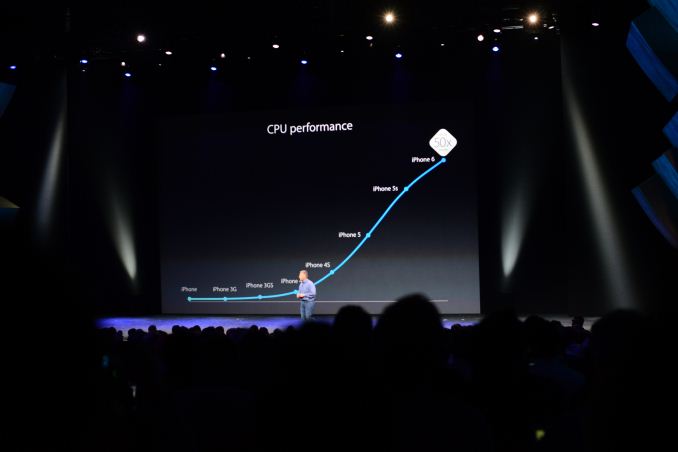
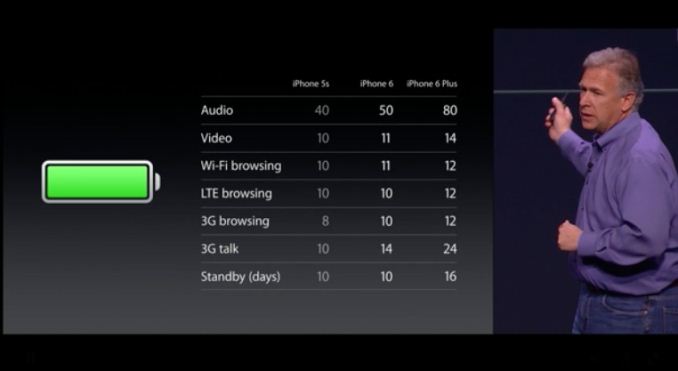
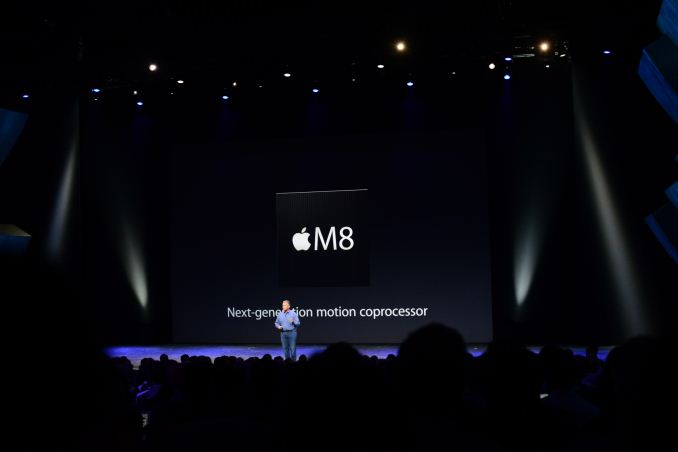
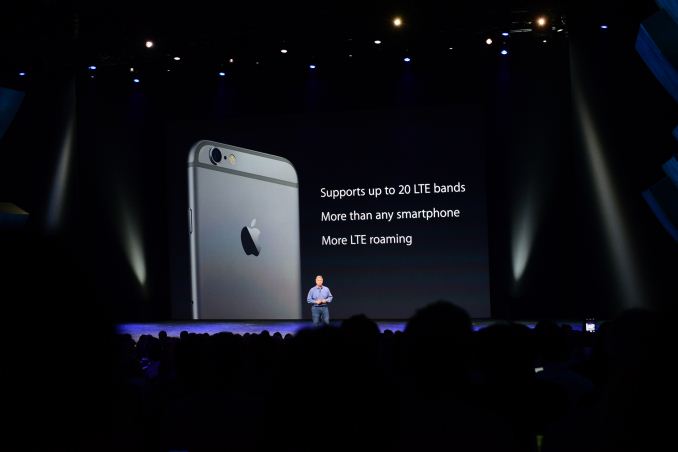


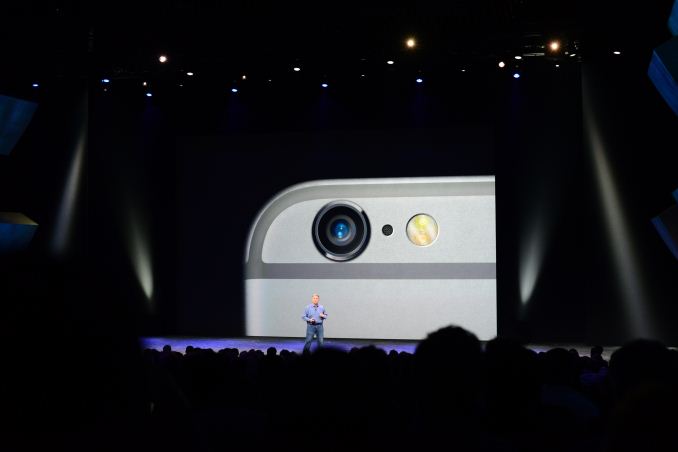
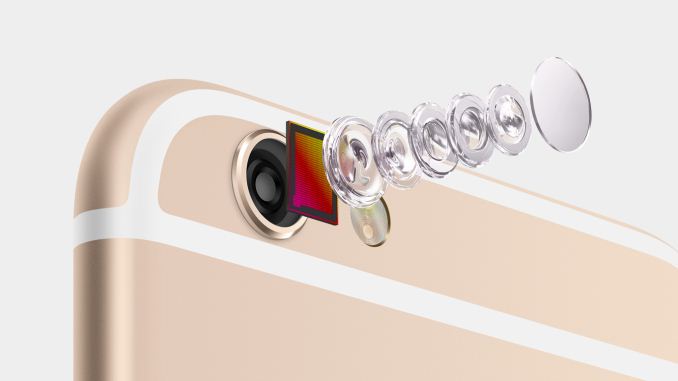
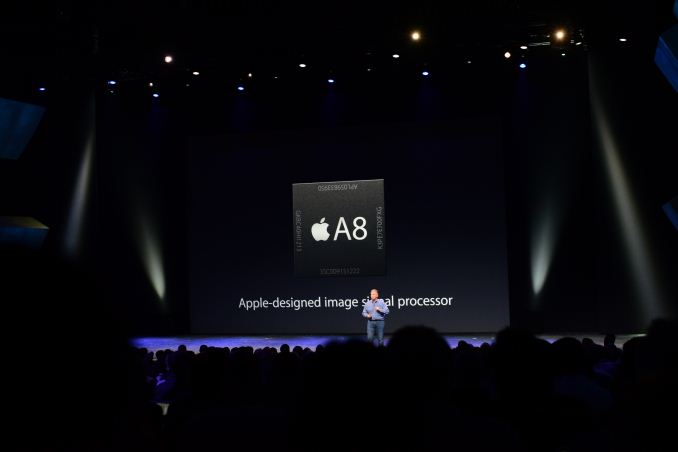
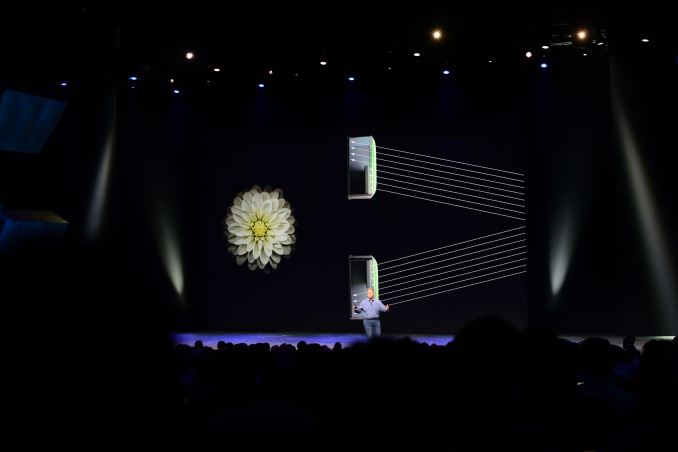
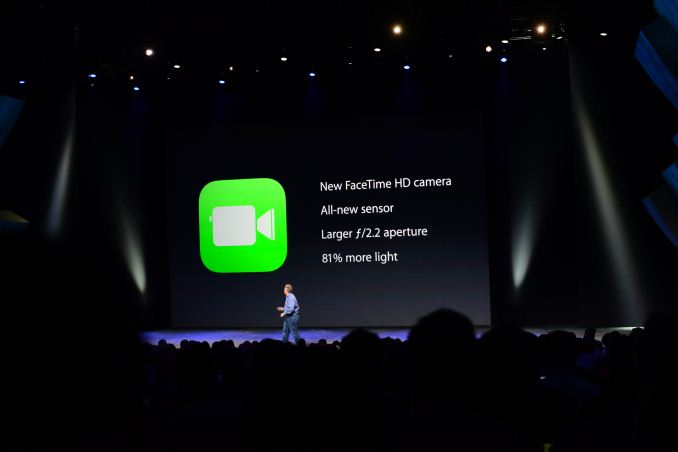
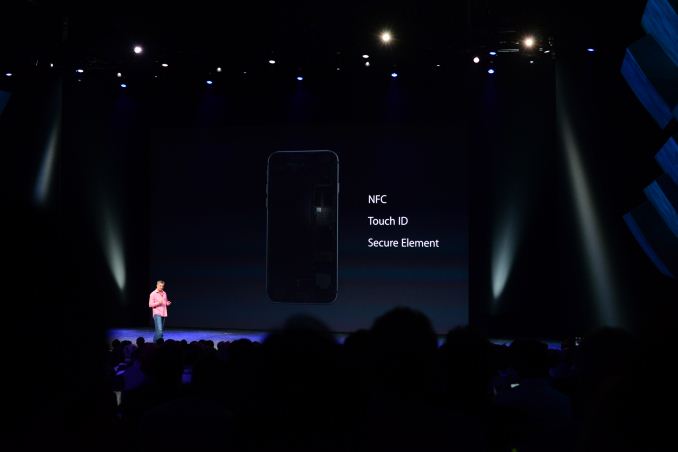
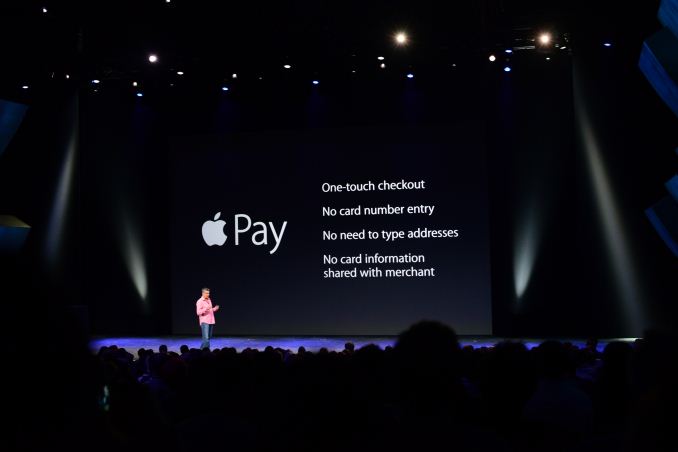
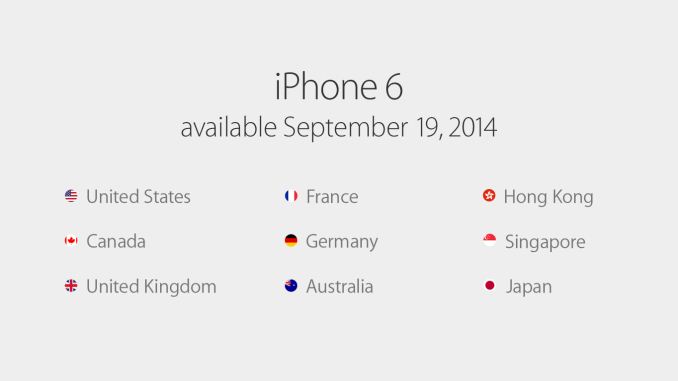








169 Comments
View All Comments
wetwareinterface - Wednesday, September 10, 2014 - link
the chip is 5 watt. the screen is pulling another watt. the wifi will pull another 1-1.5 watts. the battery is 20 wh at optimal temperature and fully charged. there are losses to account for as well in the dc-dc converters inside and general transmission losses for an electronic device like this. you can't take the specced rating of 20wh as absolute on a batteryGC2:CS - Sunday, September 14, 2014 - link
Together that's just 7-7,5 W. The tablet pulls 8,8 W during gaming, battery capacity variance in all new tablet doesn't have such big impact. During the gaming benchmark (not a game), I don't think they are downloading something, also wi-Fi doesn't pull anywhere near 1,5 W.fivefeet8 - Wednesday, September 10, 2014 - link
I've had the tablet for weeks now and have yet to notice any throttling, but do continue.ams23 - Wednesday, September 10, 2014 - link
That is incorrect. Tegra K1's GPU is ~ 50% more power efficient than the A7 GPU at equal performance levels: http://images.anandtech.com/doci/7622/Screen%20Sho...So the Tegra K1 GPU should have similar power efficiency compared to the GX6650 GPU at equal performance levels, especially when rendering is done at full precision on both (note that Tegra K1 always renders at full precision just like any other modern day console, desktop, or notebook GPU).
At Tegra K1's peak GPU performance (which is ~ 2.4x higher than A7), the power consumption for the application processor + mem. should be less than 5w.
In Shield Tablet, Tegra K1's GPU performance does NOT throttle until after > 100 continuous benchmark loops (!) when the battery % capacity is extremely low. So the magnesium heat spreader does it's job very well. I've also read that CPU performance in this tablet does not throttle much over time either, unlike what you would see in any smartphone (including iPhones) or any typical thin fanless tablet.
GC2:CS - Sunday, September 14, 2014 - link
Believing nVidia numbers is rather foolish."Full" precision is a waste of power in mobile space, according to not only Imagination technologies.
Tegra peak performance just 60% better now. Considering 50% better power efficiency and no throttling in ultra thin phone, it's safe to consider A8 is somewhere around 2W.
A7 was throttling, because it wasn't allowed to reach anywhere near K1 temperatures and again A8 doesn't throttle at all, even in a ultra thin phone. Can you feel the difference ? No throttling in a ultra thin phone and running at 80 degrees in a 8" tablet with dedicated heat spreader without reaching peak perf ?
lukedotv - Wednesday, September 10, 2014 - link
the a7 beat the tegra k1 in geekbench by 1000 to 1400 ish. The a8 gets about 1600kron123456789 - Wednesday, September 10, 2014 - link
Tell me something i don't know)) And that's in Single-Core. In Multi-core, k1 beat a7 (~2600 vs. ~3400)And, the k1 beat the a7 in gfxbench — 13fps vs. 30fps in Manhattan Offscreen.
johnny_boy - Wednesday, September 10, 2014 - link
"No match" is an overstatement since they should be pretty close. Also, as pointed out, no phones are sporting the 32-bit K1 and that's likely due to thermal reasons. The dual core 64-bit version of the K1 (Denver) might change things, but who knows. Phone manufacturers have been avoiding Tegra like the plague since Tegra 4. Finally, no games even utilize close to the full power of the K1 except for a few nvidia-specific titles like Trine 2. There's the point about future proofing, but it's probably moot for most people wanting to buy cutting-edge flagship phones anyway.eanazag - Tuesday, September 9, 2014 - link
The iPhone 6 Plus is 1080P at $300 with the 5.5" screen. I don't get this. Is this a Samsung employee?If you had a credible issue, it would be that Apple is letting 16 GB be the base model instead of 32 GB. That is what gets me to cursing. Wise up Samsung son.
ChefJeff789 - Tuesday, September 9, 2014 - link
I don't want a 5.5 in slab for a phone. My 'credible' issue is that the phones don't both have 1080p screens. Seems like a misstep to me from a company so concerned with making things easier for coders (and yes, I saw the scaling demo). Also, you have a valid point, the 16GB price point is idiotic. FYI, I HATE Samsung phones. TouchWiz is a buggy pig of a skin and I hate the plastic feel. The 1080p screen was the only important factor in my comment... Why all the hate? This is Anandtech, not Engadget...